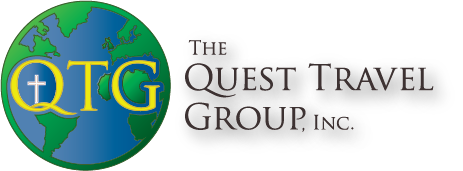Nablus / Shechem
Nablus is a Palestinian Arab city occupying much of the narrow pass between the mountains Ebal and Gerizim. It grew out of the Roman Neapolis. (Arabic has no "p" sound. It gets sounded as "b.") Titus founded the city in 72 AD after quelling the Jewish revolt. He was reacting to repeated attempts by the potentially rebellious Samaritans to settle on Gerizim, their sacred mountain. He wanted a Roman city that would keep them under control. He attached to it a large territory, bordering the lands of Caesarea, Sebastia, Scythopolis, Pella in Transjordan and Jerusalem. Pieces of the Roman theatre, hippodrome, amphitheatre and water system can still be seen amid the bustle. Third-century mosaics from Neaopolis are on display at the Israel Museum in Jerusalem.
At the eastern end of the pass, Ebal and Gerizim come within 300 yards of each other, and just beyond this point, somewhat nearer the edge of Ebal, is Tell Balata, biblical Shechem, lying halfway between Dan and Beersheba.
A few references will indicate the importance of Shechem: It was Abram's first destination in the land (Genesis 12:6). It was also first for his grandson Jacob (Genesis 33:18 ). Moses appoints it as the place of the first ceremony after the Israelites cross the Jordan (Deut. 11: 29-31). Here Joshua renews the covenant between the people and the Lord, and here Joseph's bones are buried (Joshua 24: 1, 25, 32). Abimelech, son of Gideon, is crowned king at Shechem (Judges 9:3-6). Rehoboam, son of Solomon comes here to have his kingship confirmed by the northern tribes; instead they choose Jeroboam son of Nebat, who makes it his capital (1 Kings 12:1,25). At Jacob's well nearby, Jesus conversed with a Samaritan woman. (John 4: 4-7).
The importance of Shechem derived from its position. The east-west pass between Ebal and Gerizim cuts through the spine of the central mountain range. This made possible a link between the Great Trunk Road and the King's Highway. (There were, in fact, three good links: the one through Beth Shean north of us, the one through Jericho south of us, and this middle road.) From Shechem the way continued east through Wadi Fari'ah, forded the Jordan at Adam, and then ascended through the Jabbok canyon to the King's Highway.
That link-road is half the story. But suppose you are coming from Galilee, and your destination is in the hill country: Jerusalem, for example. South of the Jezreel Plain, two roads skirt the mountains. We took the western one, passing the ancient city of Samaria. Our way was blocked by the long hulk of Mt. Gerizim, so we turned east through the pass, arriving at Shechem. The eastern route also leads to Shechem. From here to the south, via Shiloh, Bethel, Rama, Mizpeh, Gibeon, Jerusalem, Bethlehem, as far as Hebron, the only good way follows the watershed. Thus this city occupies a vital junction, where the east-west road (linking the international highways) joins the north-south road (through the mountain range).
With respect to international trade, cities like Hazor, Megiddo and Beth Shean were of course more important, for they lay on the Great Trunk Road. But the latter was extremely vulnerable. Israelites, hardly a match for Egyptian or Mesopotamian armies, found greater security in the hills. (An empire could spread its sway on the horizontal plane like water, but a few hundred yards up was a different story.) That is why the mountain towns like Shechem appear in the Bible more often than Hazor, etc.
Scripture taken from the NEW AMERICAN STANDARD BIBLE(r), (c) Copyright 1960, 1962, 1963, 1968, 1971, 1972, 1973, 1975, 1977, 1995 by The Lockman Foundation. (www.Lockman.org)
© 2003 Near East Tourist Agency (NET)
Text © 2003 Stephen Langfur
